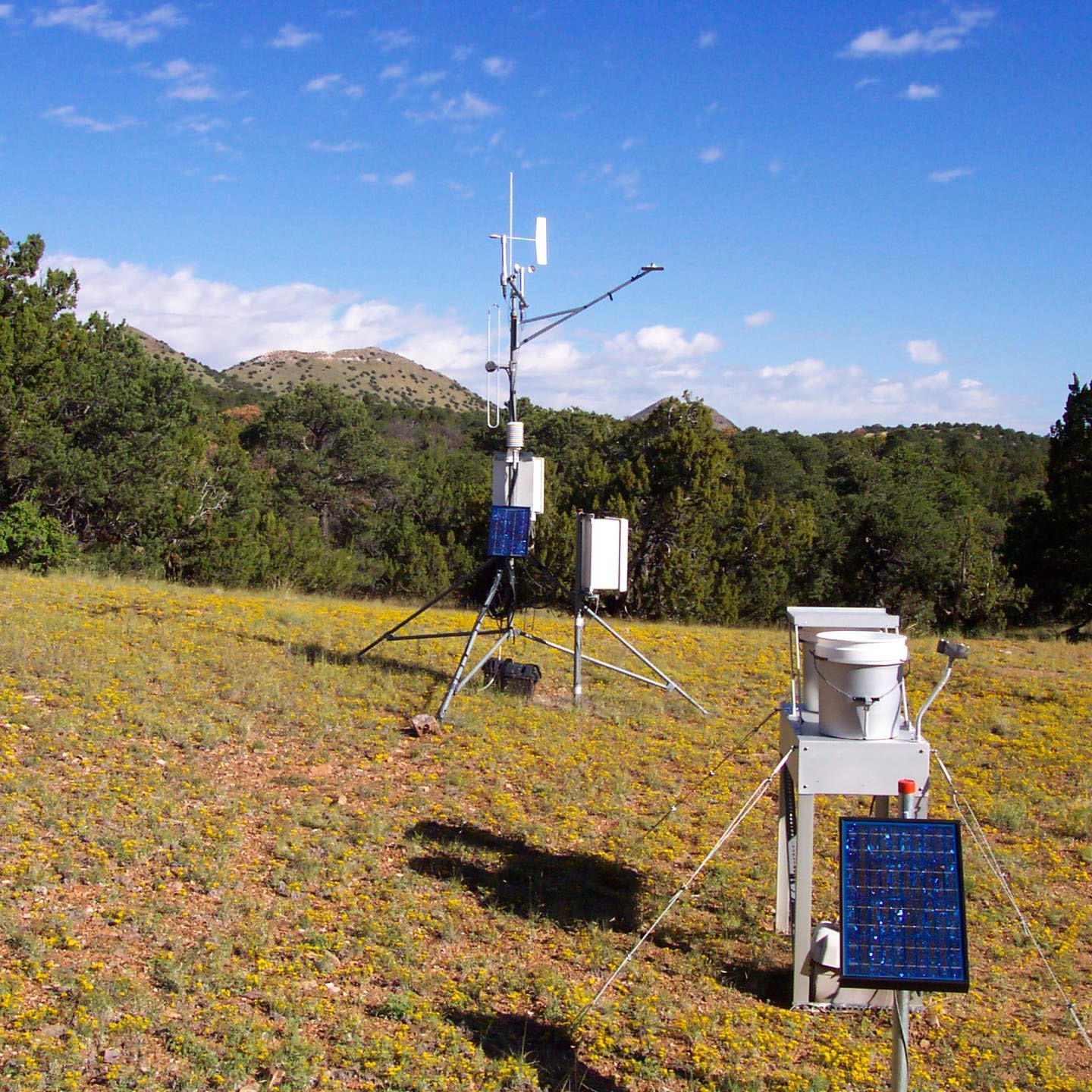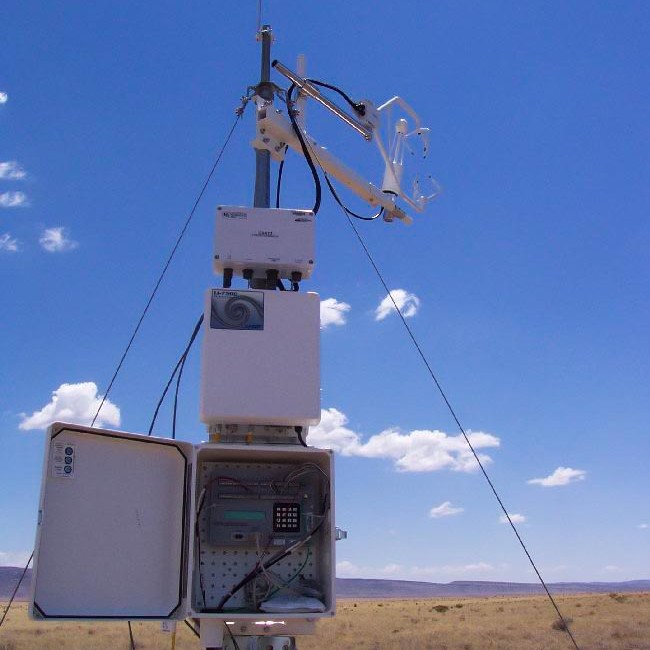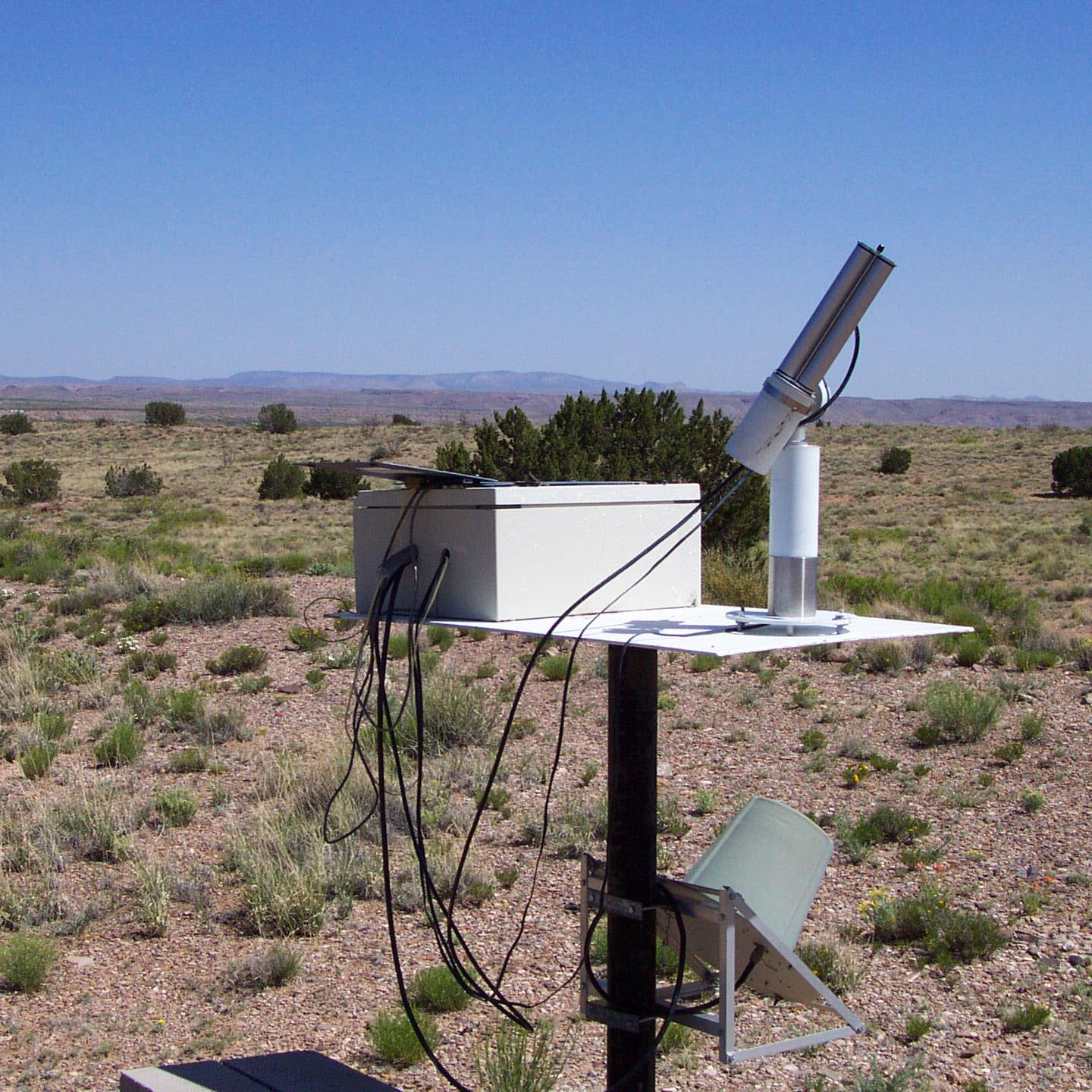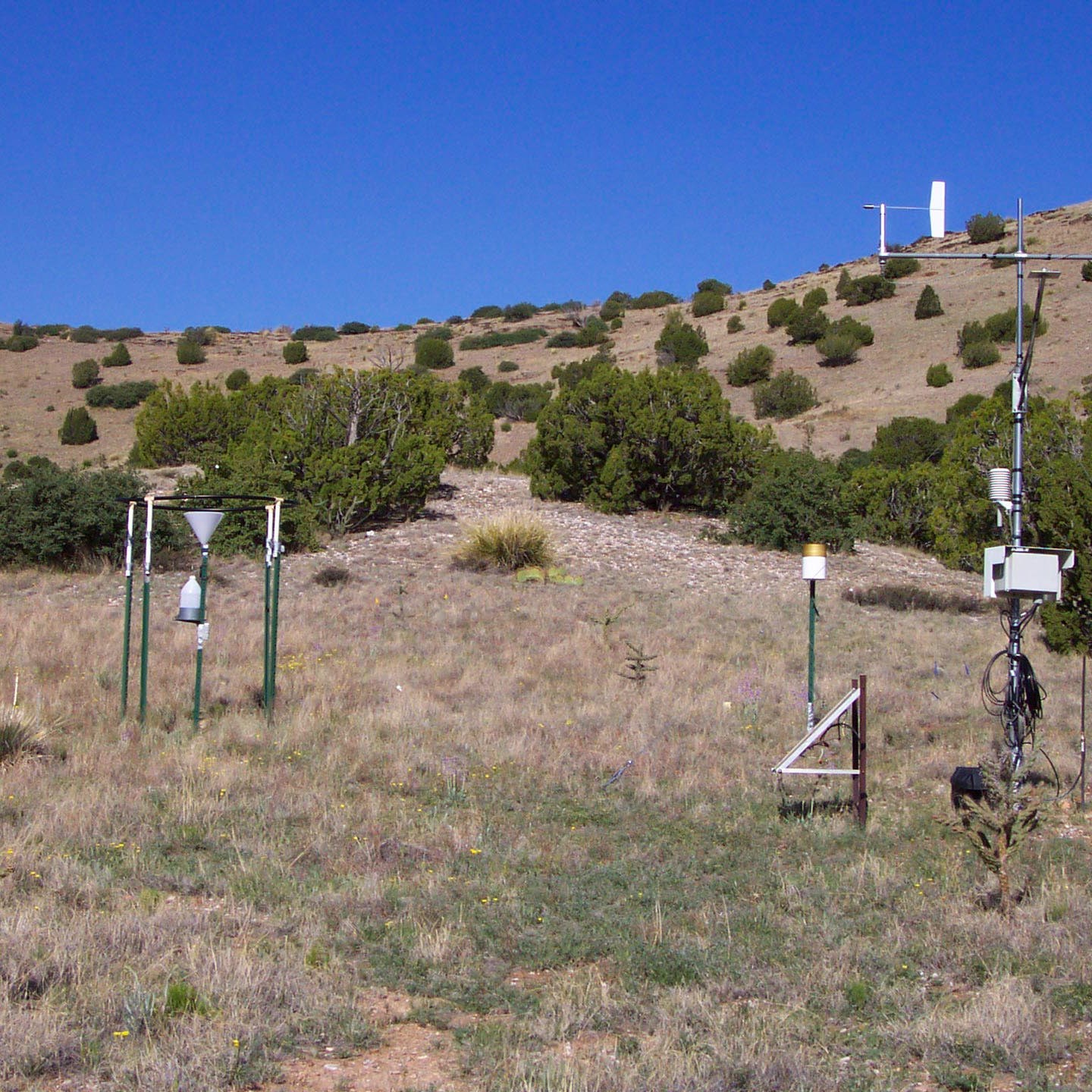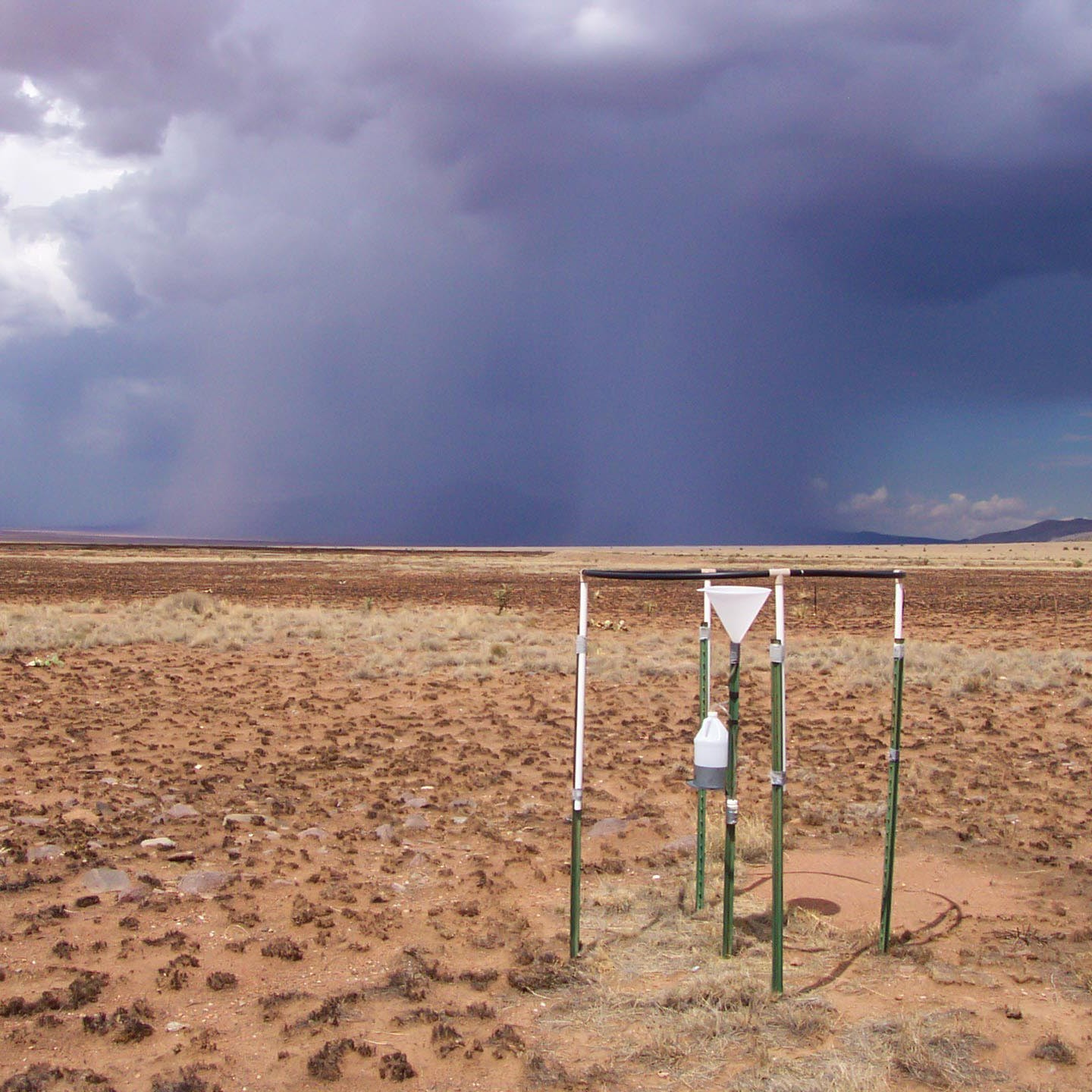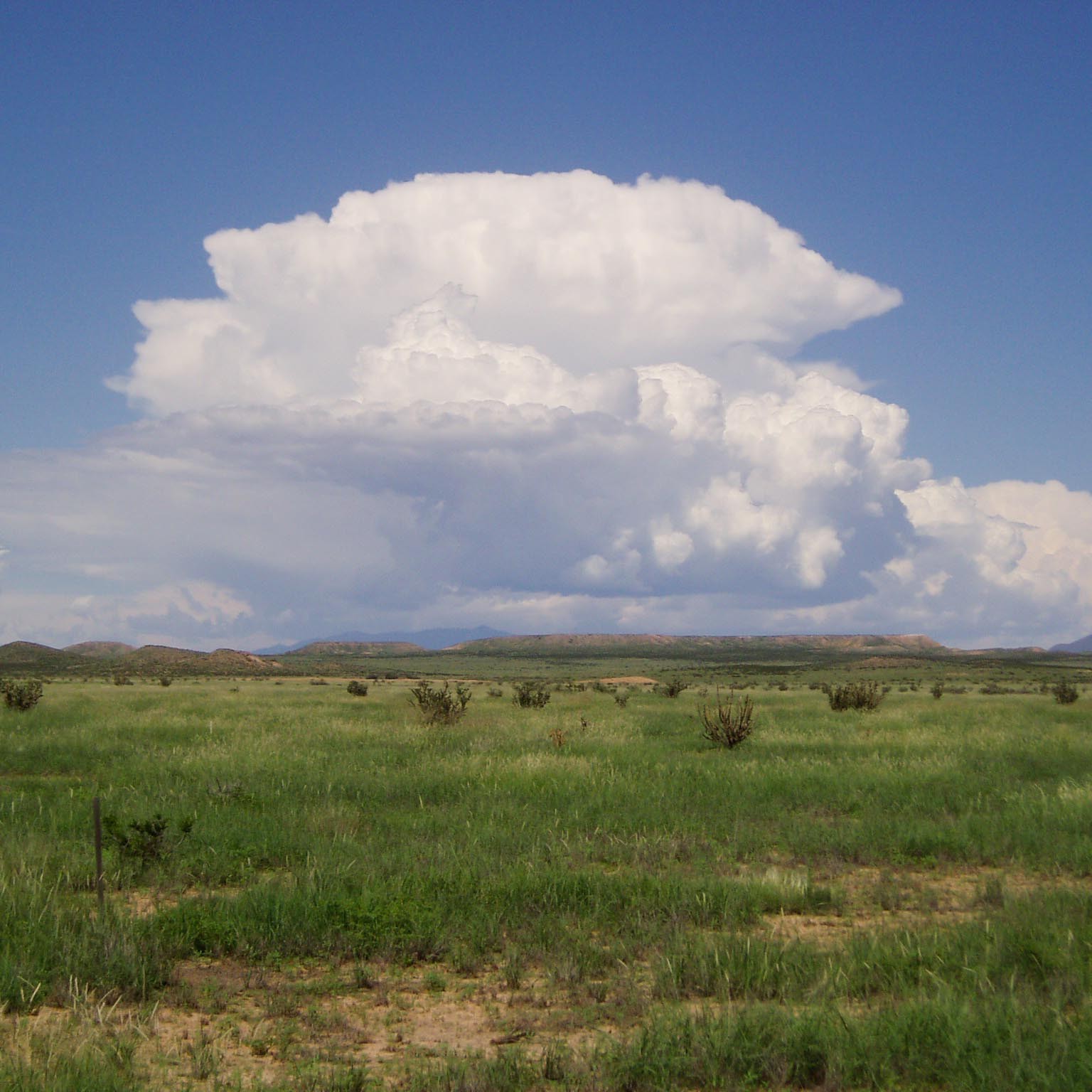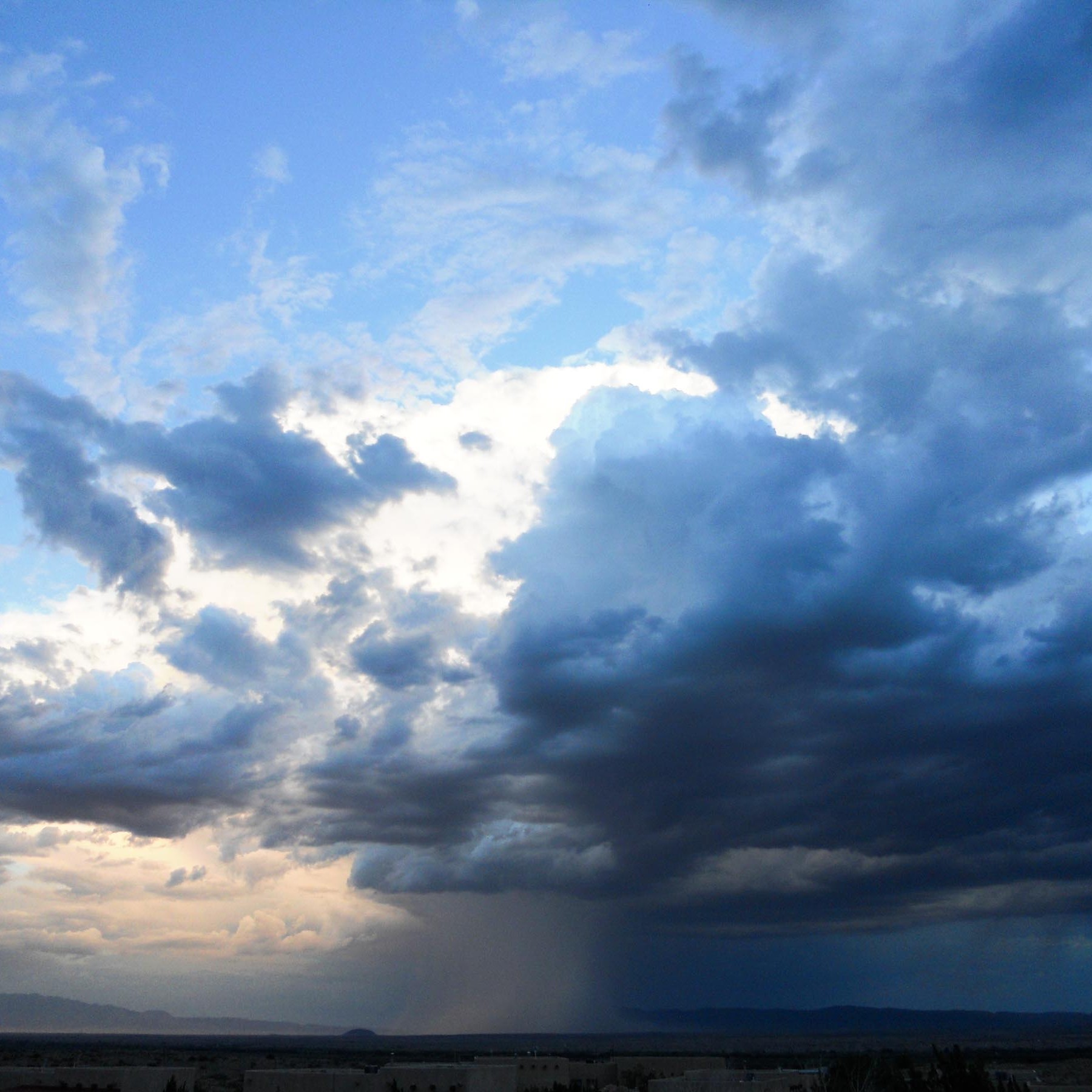Objective:
We collect hourly data from 12 meteorological stations placed strategically throughout the Sevilleta National Wildlife Refuge to maintain a long-term record of meteorological data.
Novelty:
Meteorological data have been collected at an hourly timescale at some stations since 1989. Over time, additional stations have been added to the network increasing the spatial scope on climate variables that influence ecosystem functioning. The most recent stations were installed in 2021 with an NSF infrastructure award led by Renée Brown.
Design:
Meteorological stations collect weather data at hourly intervals. The stations are connected to a wireless network that transmits data from each station to the UNM Sevilleta Field Station server where it is available via the internet. Data are typically available within a few hours of being collected. Each weather station includes a 3 m tripod tower, on which is mounted most of the monitoring equipment. This equipment includes an enclosure housing a datalogger and power supply. On the tripod are mounted an anemometer and wind vane, a pyranometer, and a solar radiation shield that encloses a combination temperature and relative humidity sensor. Other attached sensors include: a precipitation gauge, soil temperature sensors and soil moisture potential sensors.
Responses:
Currently, 12 meteorological stations collect some or all of the following variables on an hourly basis:
- Minimum, maximum, and mean air temperature
- Precipitation
- Minimum, maximum, and mean wind speed
- Vectored mean wind speed
- Wind direction and standard deviation
- 1 and 10 cm soil temperature
- Vapor pressure
- 10 and 30 cm soil moisture
- Minimum, maximum, and mean solar radiation
- Barometric pressure
We additionally support a network of Hobo rain gauges, 1-minute rain data, and NASA sun photometry data (located at the UNM Sevilleta Field Station).

